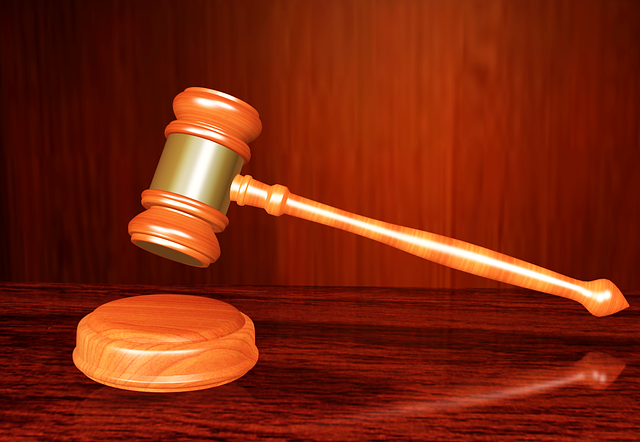Environmental crimes involve illegal actions causing significant ecological damage, such as pollution and habitat destruction. Trials focus on proving guilt by presenting compelling evidence of harm and intentional disregard for conservation, emphasizing direct causation and culpability. Advances in technology aid investigations and ensure more accurate evidence collection, helping to meet the high legal standard of "proving guilt beyond reasonable doubt" and strengthening environmental crime enforcement.
Environmental crime, a growing global concern, refers to illegal activities causing significant ecological harm. This article explores trials involving these heinous offenses, delving into key aspects like defining environmental crimes, understanding specific offenses, and navigating legal frameworks. We examine strategies for proving intent and assessing environmental damage, along with innovative evidence collection methods. Furthermore, we analyze jury deliberation processes, emphasizing the vital task of establishing guilt beyond a reasonable doubt in these complex cases.
- Defining Environmental Crime: Understanding the Offenses
- Legal Framework: Proving Intent and Damage
- Evidence Collection: Challenges and Innovations
- Jury Deliberation: Guilt Beyond a Reasonable Doubt
Defining Environmental Crime: Understanding the Offenses
Environmental crimes, often referred to as “ecological crimes,” encompass a range of illegal activities that cause significant harm to our natural environment and ecosystems. These offenses can include pollution, unlawful waste disposal, habitat destruction, and resource exploitation without proper authorization. Defining these crimes is crucial in order to hold perpetrators accountable, especially in high-stakes cases where the stakes are high and the consequences severe.
Understanding environmental crimes involves recognizing that they differ from traditional criminal offenses in their impact on the long-term health and sustainability of our planet. Unlike white-collar defense strategies that focus on proving a lack of intent or technicalities, environmental crime trials aim to demonstrate guilt beyond reasonable doubt. This means presenting substantial evidence linking the accused to specific environmental damage, demonstrating an intentional disregard for ecological preservation, and ensuring that justice is served in these complex and sensitive cases.
Legal Framework: Proving Intent and Damage
In Environmental Crime Trials, proving intent and damage is a critical component of securing convictions. The legal framework demands that prosecutors establish beyond a reasonable doubt that the accused individuals or entities had malicious intent and caused significant harm to the environment. This involves presenting robust evidence, including scientific reports, expert testimony, and firsthand accounts, to demonstrate both the illegal actions taken and their detrimental effects on ecosystems and communities. The complexity of these cases often requires extensive investigations, as environmental damage can be subtle and its impacts far-reaching, spanning across landscapes and communities.
The challenge in these high-stakes cases is not merely to show that pollution or degradation occurred but to prove that the accused’s actions were the direct cause and that they acted with culpability. Achieving extraordinary results in such trials necessitates a meticulous approach, where every piece of evidence contributes to building a compelling narrative that meets the stringent standard of proving guilt beyond reasonable doubt. This rigorous process ensures that justice is served and sets a precedent for deterring future environmental crimes across the country.
Evidence Collection: Challenges and Innovations
Environmental crime trials present unique challenges when it comes to evidence collection. As investigators strive to prove guilt beyond reasonable doubt, they must navigate complex landscapes and decipher subtle clues. Traditional methods often fall short in this domain, where evidence can be ephemeral and scattered across vast areas or hidden within intricate industrial processes.
However, innovations in technology and investigative techniques are transforming these trials. Advanced forensics, remote sensing, and data analytics enable detectives to gather and interpret information from various sources, including air and water samples, satellite imagery, and digital records. These tools not only enhance the accuracy of evidence collection but also expedite the process, allowing investigators to build stronger cases and achieve extraordinary results in environmental crime enforcement.
Jury Deliberation: Guilt Beyond a Reasonable Doubt
In Environmental Crime Trials, one of the most critical aspects is establishing guilt beyond a reasonable doubt. This standard of proof is pivotal in securing just verdicts, especially when dealing with complex white collar and economic crimes. The process involves rigorous examination of evidence presented by prosecutors to convince jurors that the accused’s actions meet this stringent legal threshold.
During jury deliberation, members carefully analyze all the facts and testimonies. They must be convinced not only of the defendant’s guilt but also that any reasonable alternative explanation is completely dismissed. This meticulous evaluation ensures that justice prevails, preventing a complete dismissal of all charges. It underscores the importance of robust evidence and strategic legal arguments in navigating the challenges of white collar defense.
Environmental crime trials play a crucial role in holding offenders accountable for damaging our planet. By understanding defined offenses, navigating legal frameworks, and leveraging innovative evidence collection methods, these cases ensure justice is served. Through rigorous jury deliberation, the burden of proving guilt beyond a reasonable doubt strengthens environmental protection efforts, deterring future crimes against nature.






